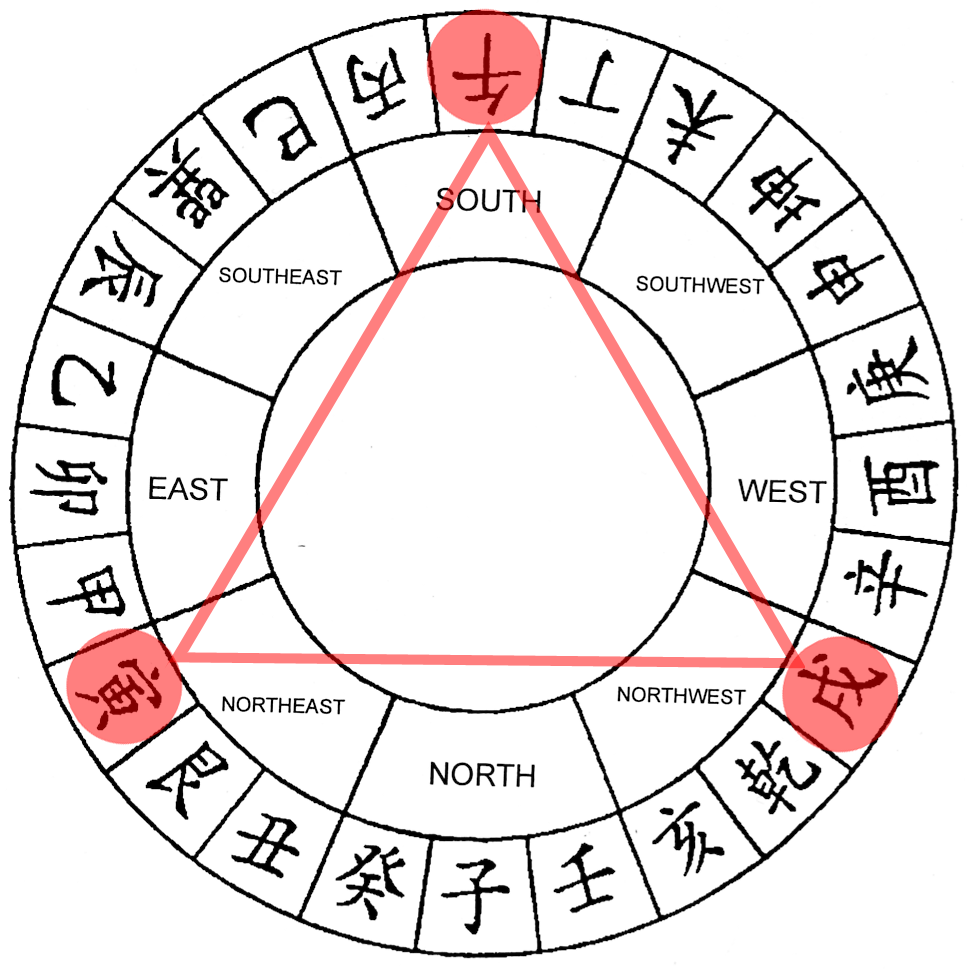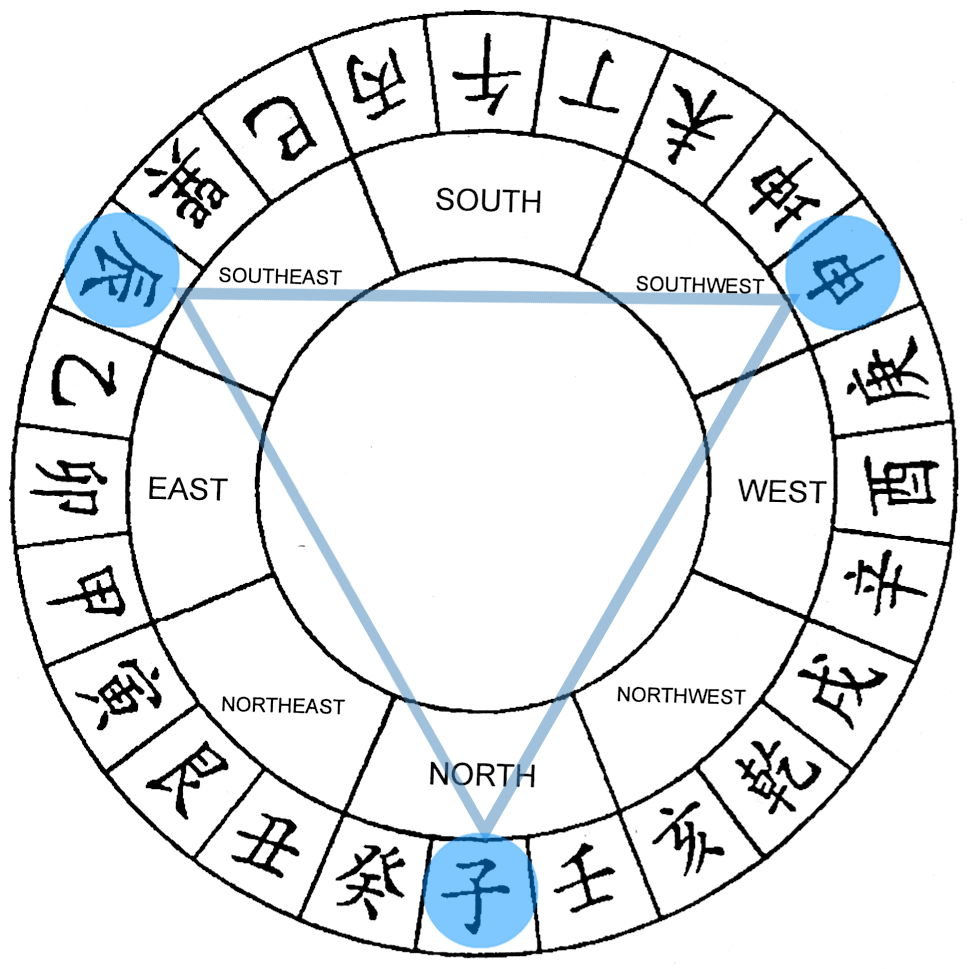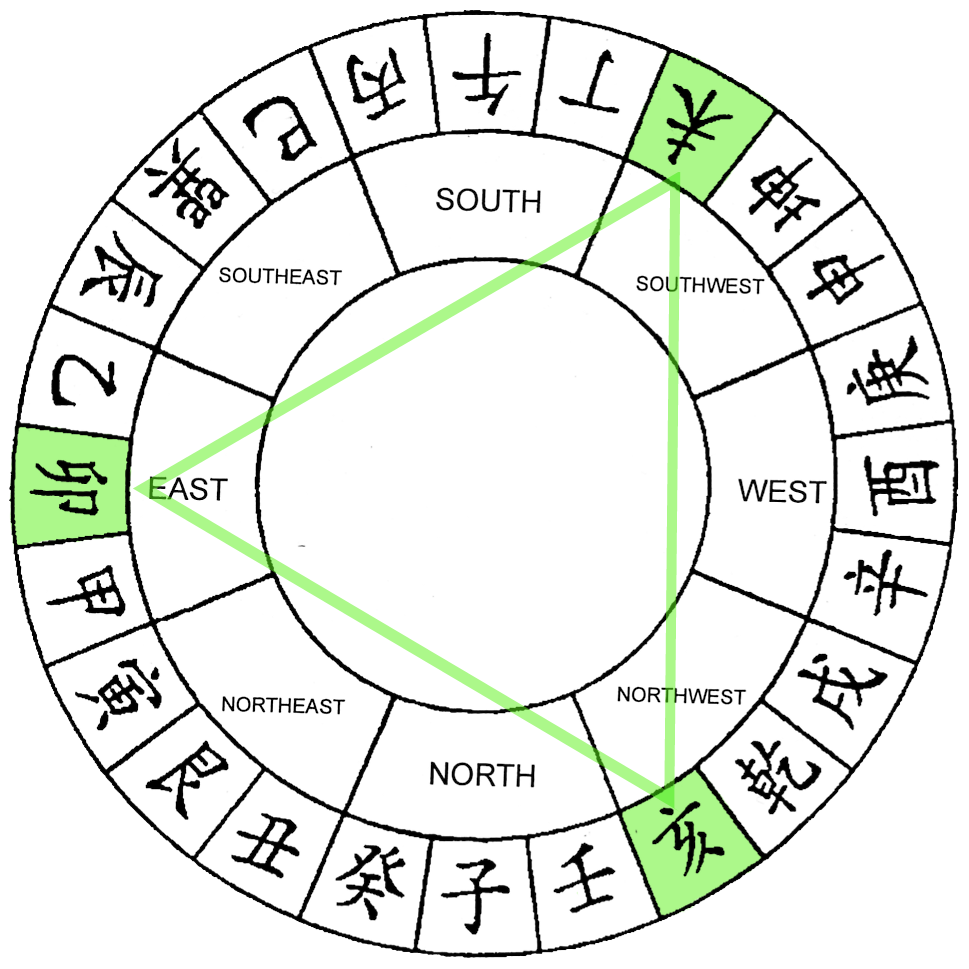Now that we have seen the 5 Elements attribute and cycles used in Feng Shui, Bazi and Chinese medicine, it is time to look into more advanced concepts. I invite you to read the first part here: what are the Five Elements. So let’s go deeper into the Rabbit hole. We are first going to see the 5 Elements cycle: productive, destructive, and limiting. We will then look at the axis and something known as the Elemental frame.
The cycles of the 5 Elements
Now that you know what are the 5 Elements: Wood, Fire, Earth, Metal and Water, we need to see which relation they have with each other. The first cycle we look at is the productive cycle. In other word, which Element produce what, in a forward/clockwise fashion.
The productive cycle is:
- Wood feeds Fire
- Fire nourrishes Earth
- Earth produces Metal
- Metal generates Water
- Water feeds the Wood
We therefore have a full cycle. This cycle is used in elegant Feng Shui solutions. If for example there is too much Fire in a room or sector, using the Earth Qi and colours will bring it down.
We then go into the destructive cycle, also know as controlling.
- Wood takes from Earth
- Fire melts the Metal
- Earth blocks Water
- Metal chops Wood
- Water estinguishes Fire
This cycle forms a pentagram. It is rarely used for Feng Shui solutions, except in some cases for business. At home, introducing a clash is not a great idea…It is however the diagnosis of many problems, with too much Fire attackign a Metal area of relationships for example. This logic is also used when I do my Bazi world forecast and predictions, or a chart.
Finally we have the lesser limitating cycle. It is as follow
- More Wood reduces Water
- More Fire reduces Wood
- More Earth reduces Fire
- More Metal reduced Earth
- More Water reduces Metal
This cycle can also be used for both Feng Shui diagnosis and solutions. It is a counter-clockwise cycle.
Let’s now see some more advanced concepts.
The axes on the Bagua
The placement of the 5 Elements in the later heaven Bagua, that is used in Yang Feng Shui is as follow.
Here, we have two important axes plus a buffer.
- Vertical axis: Fire goes up, Water goes down; they are in direct opposition on the vertical axis.
- Horizontal axis: Wood expands and is therefore centrifuge; Metal contracts and is therefore centripetal. They are opposed on the horizontal axis.
- Buffer. The Earth, with its central location but also into a diagonal axis Northeast-Southwest, acts as a buffer and transitional Element.
This brings us to the special status of the Earth Element.
5 Elements: 4 + 1
In reality, not all 5 Elements are created equal: it is really 4 + 1. In Yin Feng Shui, which is the origin of Feng Shui (dealing with the burial sites before the houses were considered) only 4 Elements are used: Fire, Metal, Water and Wood. The Earth only comes into play when used in Yang Feng Shui! And inside the 24 mountains or subdirections of the Bagua, the Earth cannot be found as a pure Element; while Fire, Metal, Water and Wood mostly all exist in pure form in some of their respective sectors. For example Mao, the Rabbit sign, is pure Wood; Wu, the Horse sign, is the peak of Fire; You, the Rooster, is pure Metal and Zi, the Rat, pure Water. It should be noted that the Horse is the peak of the Fire Element but not pure Fire as it contains some Earth – so it is a bit different than Mao, You and Zi. Nevertheless, those 5 signs that represent the four cardinal directions are considered to be the purest form of the 4 Elements and are known as the four Peach blossom Stars.
In comparison, none of the 4 Earth signs are pure: the Dragon, Shen, contains Water; the Goat, Wei, contains Wood; the Dog, Xu, contains Fire; the Ox, Chou, contains Metal. This leads us to another advanced concept.
The Elements frame.
For the same reason, there is no Earth frame, while there is a Water, Wood, Fire and Metal frames. Those frames speak both about the seasons of the Elements and their placement. They show when an Element is born, when it reaches its peak and when it vanishes: both in the Bagua and for the time of the year. Quite logically, the sectors that we strongly associate with one respective Element: East-Wood, South-Fire, West-Metal and North-Water actually represents the time and space where and when those 4 Elements reach their maximum within their respective frames.
Here are those very important Elemental frames:
- The Fire frame
The Fire Element is born with the sign of the Tiger that lays in the Northeast 3 sector (52.6 – 67.5). It reaches its maximum in the sign of the Horse that is in South 2 sector (172.6 – 187.5). Finally, it disappear sin the sign of the Dog that is located in the Northwest 1 (292.6 – 307.5) sector.
With the Chinese names for those signs, the Fire Elemental frame is: Yin-Wu-Xu
- The Metal frame
The Metal Element is born with the sign of the Snake that lays in the Southeast 3 sector (142.6 – 157.5). It reaches its maximum in the sign of the Rooster that is in West 2 sector (262.6 – 277.5). Finally, it goes underground in the sign of the Ox that is located in the Northeast 1 sector (22.6 – 37.5).
In Chinese, the Metal Elemental frame is: Si-You-Chou
- The Water frame
The Water Element is born in the Monkey sign that is located in the Southwest 3 sector (232.6 – 247.5). It reaches its pinnacle with the sign of the Rat, that is the North 2 location (352.6 – 7.5). Finally, it vanishes into the Dragon sign that is the Southeast 1 sector (112.6 – 127.5).
In Chinese, the Water Elemental frame is: Shen-Zi-Chen
- The Wood frame
The Wood Element is born with the sign of the Pig that occupies the Northwest 3 sector (322.6 – 337.5). It reaches its full intensity in the sign of the Rabbit that is in East 2 sector (82.6 – 97.5). Finally, it disappears in the sign of the Goat that is located in the Southwest 1 sector (202.6 – 217.5).
In Chinese, the Wood Elemental frame is: Hai-Mao-Wei
Those frames are very important to understand as they tell us where the specific Elements must be strong and where they should not be. They also represent moments in time, as follow:
- Fire Element: born in early Spring – full in Summer – disappearing in late Autumn
- Metal Element: born in early Summer – full in Autumn – disappearing in late Winter
- Water Element: Born in early Autumn – full in Winter – disappearing in late Spring
- Wood Element: Born in early Winter – full in Spring – disappearing in late Summer.
And as expected, there is no Earth frame here. While the pure Earth Element can be found in the center, it is otherwise a transitional Element between the other four on the Bagua. As there is no pure Earth to be found in the 8 main directions, there is therefore no Earth frame either.
I now invite you to read the last part where we explore the connection of the Five Elements to numerology, Chinese medicine and much more.
(thanks to Marc-Olivier Rinchart for his contribution on the Horse sign).





Pingback: The 5 Elements guide. Part 1: What are the Feng Shui five elements? – Laurent Langlais